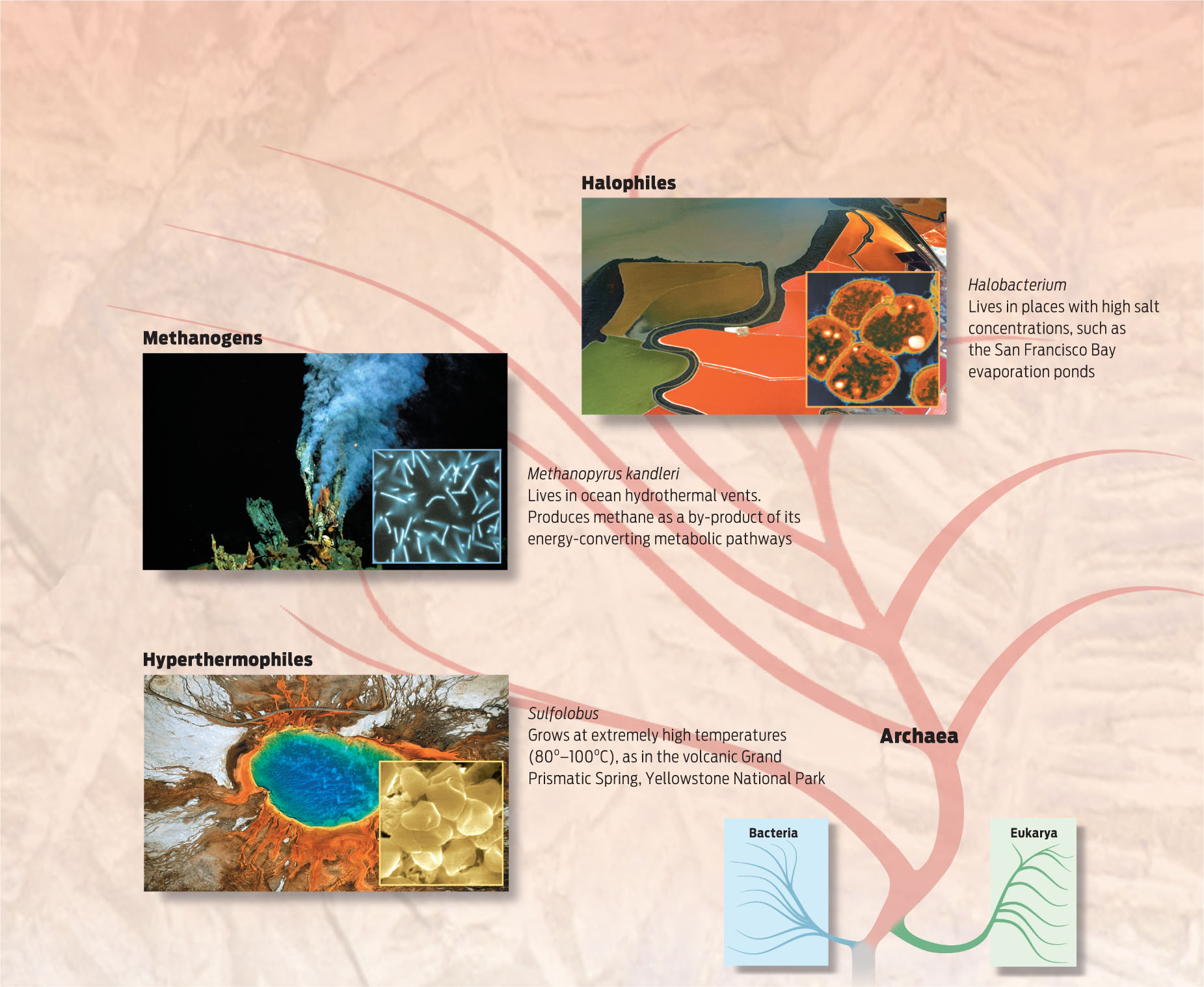Going to Extremes: Archaea
ARCHAEA One of the two domains of prokaryotic life; the other is Bacteria.
Archaea are similar to bacteria in that archaea are simple cells that lack a nucleus, but genetically they are as different from bacteria as humans are. All those genetic differences add up to a number of unique features that distinguish archaea from bacteria. For example, while bacteria have cell walls made of the molecule peptidoglycan, archaea have cell walls made of other molecules.
Though archaea are found in many run-of-the-mill habitats such as rice paddies, forest soils, ocean waters, and lake sediments, the most well-known species are the so-called extremophiles. Many of these extreme-loving archaea, including those living in Lost City, are hyperthermophiles—organisms that can survive only at extremely high temperatures. Many hyperthermophilic archaea are anaerobic and rely on sulfur instead of oxygen in metabolism. Sulfur-rich hot springs like those in Yellowstone National Park are home to these archaea.
402
Other archaea are methanogens, which consume carbon dioxide and hydrogen and produce methane as a by-product in a process called methanogenesis. Because this gaseous meal is completely inorganic, these archaea are considered autotrophs. A methanogen that can survive in an even more extreme environment than Lost City is Methanopyrus kandleri, which lives in a type of hydrothermal vent known as a black smoker, where the temperature can be 121°C—thought to be the upper temperature limit of life. Methanogens occupy more mundane environments as well, including the digestive systems of methane-belching cows.
403
Some archaea are halophiles, or “salt lovers,” and prefer a home saturated in salt, which would shrivel most other living things. Their presence is detectable by the colorful pigments they produce—bright reds, yellows, and purples—as seen in salt ponds in San Francisco Bay (INFOGRAPHIC 18.7).
Archaea are sometimes known as “extremophiles.” They live in diverse environments, often with very harsh conditions.

The archaea’s affinity for such extreme environments is suggestive of their evolutionarily ancient roots. The early Earth was a lot warmer than it is now, and it’s long been a question how living things could withstand the heat that then prevailed. If the archaea at Lost City are any indication, they would have done just fine.
In addition, some researchers suspect that methanogenesis may be among the most ancient forms of metabolism on Earth. Scientists who study the origin of life believe that the first organisms were likely autotrophs that obtained their carbon from carbon dioxide, using hydrogen as an energy source and emitting methane as a by-product—in other words, doing exactly what certain archaea do today.
More recently, scientists studying Lost City have suggested that the archaea found there may survive by consuming, rather than producing, methane. For many years, it was thought that the only organisms capable of “eating” methane were bacteria that required oxygen in order to do so, much as we require oxygen to perform aerobic respiration (see Chapter 6). But scientists now think that archaea can consume methane without oxygen. That’s a handy trait to have when you live in an environment lacking oxygen—which is exactly what the ancient Earth was.